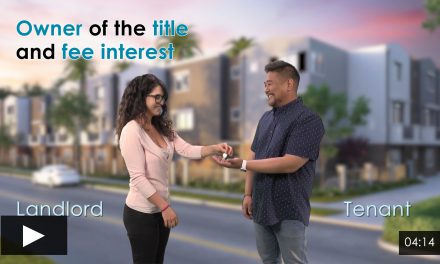MLO Mentor is an ongoing series covering compliance best practices for mortgage loan originators (MLOs). This article discusses record retention and discrimination rules under the Equal Credit Opportunity Act (ECOA) – find Part 1 of MLO Mentor: ECOA Disclosures here.
Record retention
For 25 months after the date a lender notifies an applicant of action taken on an application or of incompleteness, the lender needs to keep a copy of:
- the application, including applicant information obtained to monitor compliance with the ECOA;
- any other written or recorded information used in evaluating the application and not returned to the applicant at the applicant’s request;
- the written notification of action taken, or a notation of an oral notification;
- the written statement of specific reasons for adverse action, or a notation of an oral notification; and
- any written statement submitted by the applicant alleging a violation of the ECOA or Regulation B. [12 CFR §1002.12(b)]
A lender needs to keep application documents and notations of actions taken on withdrawn applications for 25 months after the lender’s receipt of the application. If the lender is being investigated for an alleged violation of the ECOA, they need to keep all records until the investigation has been resolved. [12 CFR §1002.12(b)(3)-(4)]
This record retention requirement extends to both required data collection and voluntary data collection, e.g., government monitoring information (GMI) collected voluntarily on multiple co-applicants. [12 CFR §1002.12(b)(1)(i)]
Right to an appraisal
ECOA also compels lenders to provide a copy of the appraisal report used in connection with a mortgage loan secured by a first lien on a one-to-four unit residential property. The appraisal report needs to be furnished in all cases, regardless of whether the application is approved, withdrawn, denied or incomplete. [12 CFR §1002.14(a)]
Editor’s note — The term “appraisal” is used here to denote both appraisal reports and other types of valuations. Other types of valuations include any documents prepared by the lender to assign value to a property (e.g., a “broker price opinion”). [Official Interpretation of 12 CFR §1002.14(b)(3)-1]
Within three business days of receiving the application for a first lien secured by a one-to-four unit residential property, lenders need to provide applicants with a notice of the applicant’s right to receive the appraisal report. The notice is no longer optional based on the lender’s discretional procedures for providing the appraisal report. [12 CFR §1002.14(a)(2)]
The appraisal report will be required to be delivered promptly after being completed, and no later than three business days prior to consummation. Consummation is defined as the date the applicant becomes contractually obligated on the loan. Applicants may agree to receive the appraisal later than the three business days prior to consummation. [12 CFR §1002.14(a)]
Delivery occurs three business days after mailing or delivering the copies to the last-known address of the applicant. [Official Interpretations of 12 CFR §1002.14(a)-4(i)]
The actual determination of when a “consummation” has occurred is set by the respective state law. [Official Interpretations of 12 CFR §1002.14(b)(1)-1]
If the loan is not consummated, the lender needs to provide copies of the appraisal no later than 30 days after determining the loan will not be consummated. [12 CFR §1002.14(a)]
The new law also clarifies that lenders cannot charge to provide a copy of the appraisal report. They may, however, still require applicants to reimburse them for the costs of copying, mailing or ordering the appraisal itself. [12 CFR §1002.14(a)(3)]
As an alternative, lenders may provide electronic copies of the appraisal report instead. [12 CFR §1002.14(a)(5)]
ECOA reviews
The Consumer Financial Protection Bureau (CFPB) conducts lender reviews to determine compliance with the ECOA. The first review is called a Baseline Review. The Baseline Review is an overall determination of how the lender complies with the ECOA. During this review, the CFPB scrutinizes a lender’s processes and policies to determine the risk of violations.
Baseline Review topics include a review of underwriting procedures. Are underwriting processes automated or manual? Are underwriting policies in place, and if so, how are they communicated to staff? What are the procedures and criteria for granting an underwriting exception? The greater the individual leeway given to staff members, the greater the chance of unequal treatment. [CFPB Examination Procedures — ECOA 7]
Additionally, the Baseline Review will include an examination of pricing procedures. The CFPB looks for written pricing policies and procedures based on specific, objective and defined criteria. Any staff allowances to override the published pricing are to be documented, and the frequency noted. This part of the evaluations also reviews staff compensation, and reviews whether the lender is complying with loan originator compensation rules set forth in Regulation Z. [CFPB Examination Procedures — ECOA 8-9]
Finally, the Baseline Review reviews the geographical distribution of the lender’s activities. It evaluates the lending products provided, in relation to the demographic make-up of the lending branch location. The geographical review also covers advertising used in each area in which the lender does business to identify any potentially discriminatory content.
After the Baseline Review, the CFPB then proceeds to a Targeted Review — a more in-depth look at the lender’s policies which have the greatest vulnerability to ECOA violations. Additionally, the CFPB may engage in a HMDA data collection review to determine whether such data is being collected as required.
Penalties for discrimination
Penalties for violation the ECOA include actual money losses sustained by a person who has been discriminated against and, for individual cases, punitive money awards of up to $10,000, plus attorney fees. [15 USC §1691e]
Punitive money awards in class action suits are limited to the lesser of:
- $500,000; and
- 1% of the lender’s net worth. [12 CFR §1002.16(b)(1)]
The lawsuit alleging a violation of the ECOA needs to be brought in court within five years after the alleged violation. [12 CFR §1002.16(b)(2)]
Related video:



















